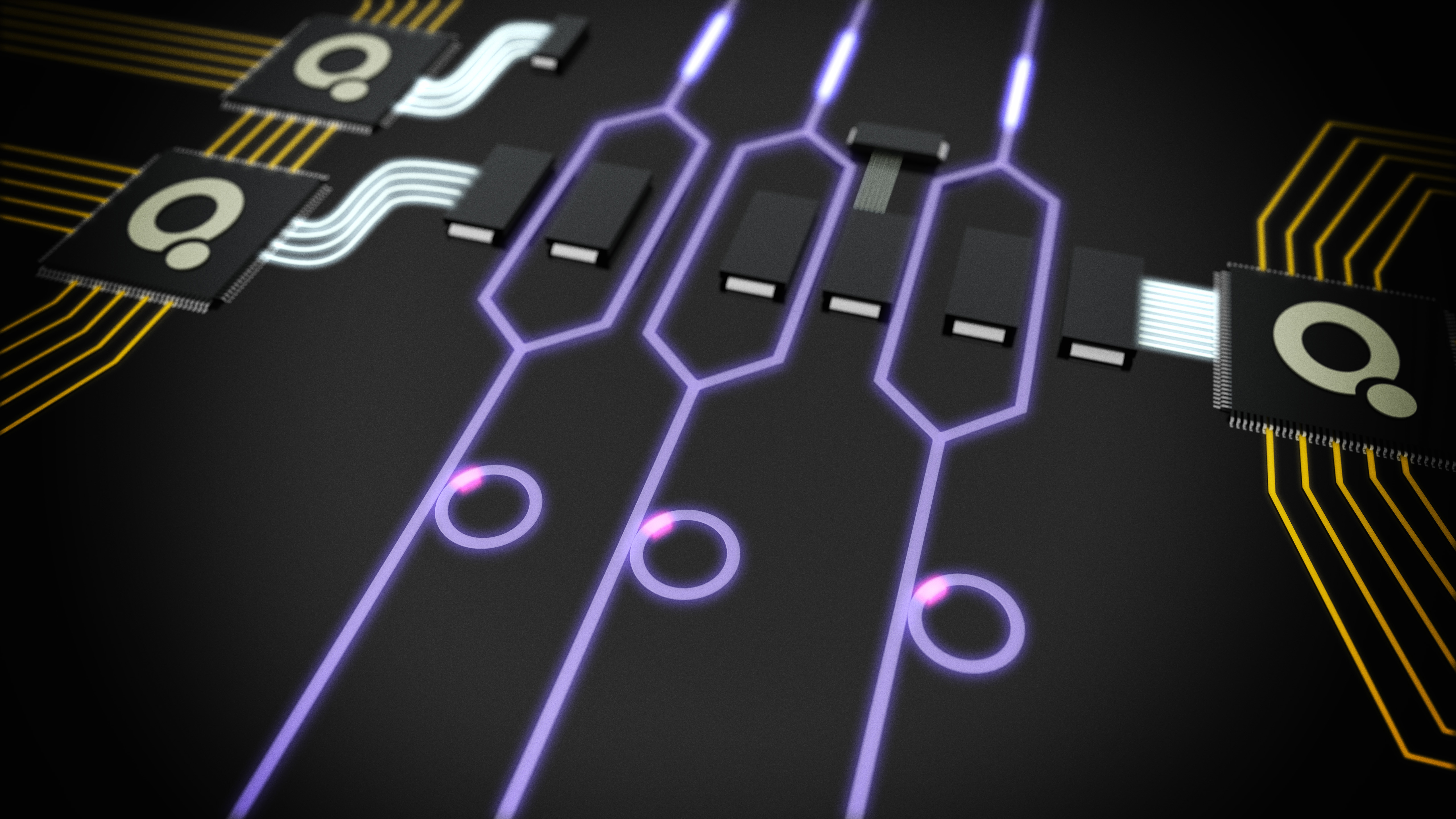PhoQuant - Photonic quantum computer
Duration: 2021 - 2026

With sufficiently high interconnection of many computational units (qubits), quantum computers can achieve higher computing speeds than classical computers. It is precisely at this scale that the photonic approach, which uses light particles (photons) as qubits, offers enormous advantages. This is because the functions required for the computing operations can be produced on a single chip using sophisticated semiconductor manufacturing processes. Fraunhofer IPMS is therefore conducting research with partners on a photonic quantum computer.
The project goal is to provide an advantage for the computation of industry-relevant applications. A first example is the real-time optimization of schedules at airports in case of unforeseen delays. For this, the consortium, consisting of university research, startups and industry, is developing a new photonic computing architecture that will enable a quantum computer with up to 100 qubits over the course of the project.
The project is based on a method developed by coordinator Q.ANT to fabricate extremely powerful quantum computer chips. By creating highly specialized optical channels on silicon chips, this photonic chip process is able to transport, control and monitor quanta with almost no loss, even at room temperature. This will allow the chips to be used in conventional mainframe computers in the future.
The integrated (monolithic) design of this architecture combined with scalable fabrication - based on established manufacturing processes from the semiconductor industry - promises rapid further development beyond 100 qubits following the project. Tailored to this new architecture, optimized algorithms for special problems as well as algorithms for universal quantum computing will be developed during the project and made available to the public via cloud connection.
Fraunhofer IPMS in the project
Fraunhofer IPMS is developing the integrated, monolithic control of the optoelectronic components of the photonic quantum computer as well as the assembly and interconnection technology. In two and a half years, the project partners want to present a first prototype, and in five years at the latest, a quantum computer chip capable of performing large-scale computations will be developed.
Expertise
- Analog/digital integrated circuits for quantum technologies
- Experienced software team for application-specific quantum developments
- Next generation computing
 Fraunhofer Institute for Photonic Microsystems
Fraunhofer Institute for Photonic Microsystems